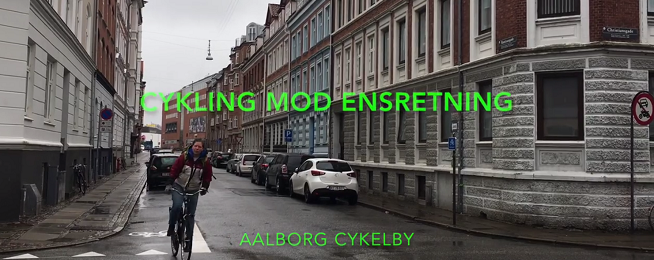More and more cities and towns are adopting the contra-flow bike lane as a basic tool for hooking up gaps in their bike networks.
Contra-flow bike lanes enable cyclists to ride against the direction of one-way streets, utilising various levels of markings and signage to separate them from the vehicles coming the other way.
The latest is Aalborg, Denmark, a regional city in the north of Jylland, far from the national capital of Copenhagen which currently is ranked as the number 1 city for cycling in the world.
Aalborg has recently implemented contra-flow lanes along 11 streets within the central city. This initiative was aimed at making routes that pass through the area more direct, preventing cyclists travelling to a destination having to make long detours.
Aalborg City Council stated that making these changes to targeted locations can improve the convenience of cycling, getting more people to participate in active travel and reducing congestion and pollution.
The criteria of street selection was based on the contra-flow lanes being able to be installed with minimal changes to the rest of the street and low impact on other users.
Due to the local, traffic-calmed environment, the changes focused more on providing signage and some lane markings at the intersections of these streets, rather than removing car-parking to install a dedicated lane.
Australian traffic engineers have dipped their toe in to the contra-flow lane concept, especially in Melbourne, but there are still many opportunities where it can be further implemented.
The contra-flow system will be familiar to anyone who rides north-south through Clifton Hill and Richmond in Melbourne, as they have been used in a handful of areas to maintain the directness of these quieter streets for riders, while at the same time restricting two-way traffic for other vehicles.
It is in this type of setting where they could have the greatest impact. Streets that over the decades have been restricted to one-way so as to prevent peak hour “rat runs” are prime candidates for contra-flow as by way of this restriction it identifies them as convenient routes that avoid large intersections and busy roads.
Their appearance is also more likely along the small streets of CBDs, and inner city locations. As is the intention in Aalborg, increasing the permeability of these dense areas will make riding around the city more convenient and direct.
While it is another step along the line of making bike rider’s journeys easier, this initiative in Aalborg also highlights the political sensitivity around changing streetscapes for the benefit of rider at the detriment of car users.
This balancing act evidently is navigated with caution by municipal and council level governments, not only in Australia, but also a bike-loving country like Denmark.
But as always, the anxiety on display before such changes are implemented quickly fades away in the face of the successful outcome.


